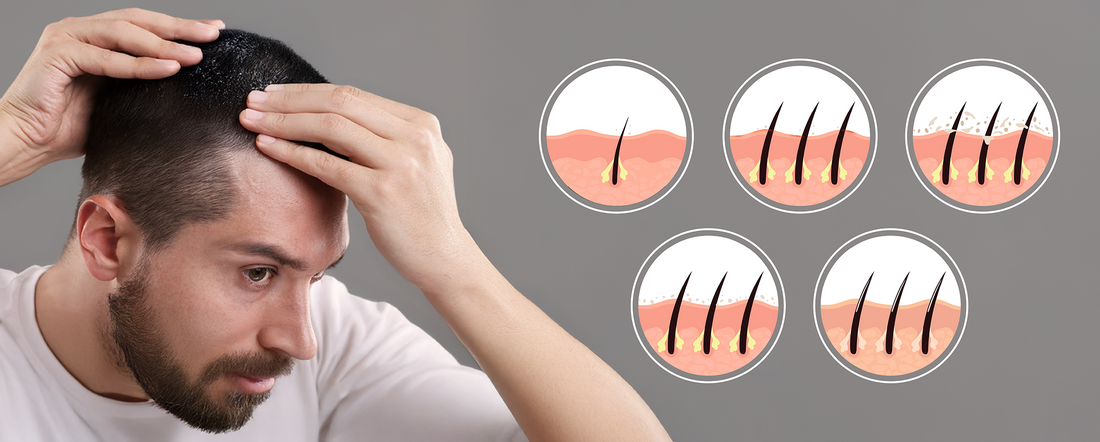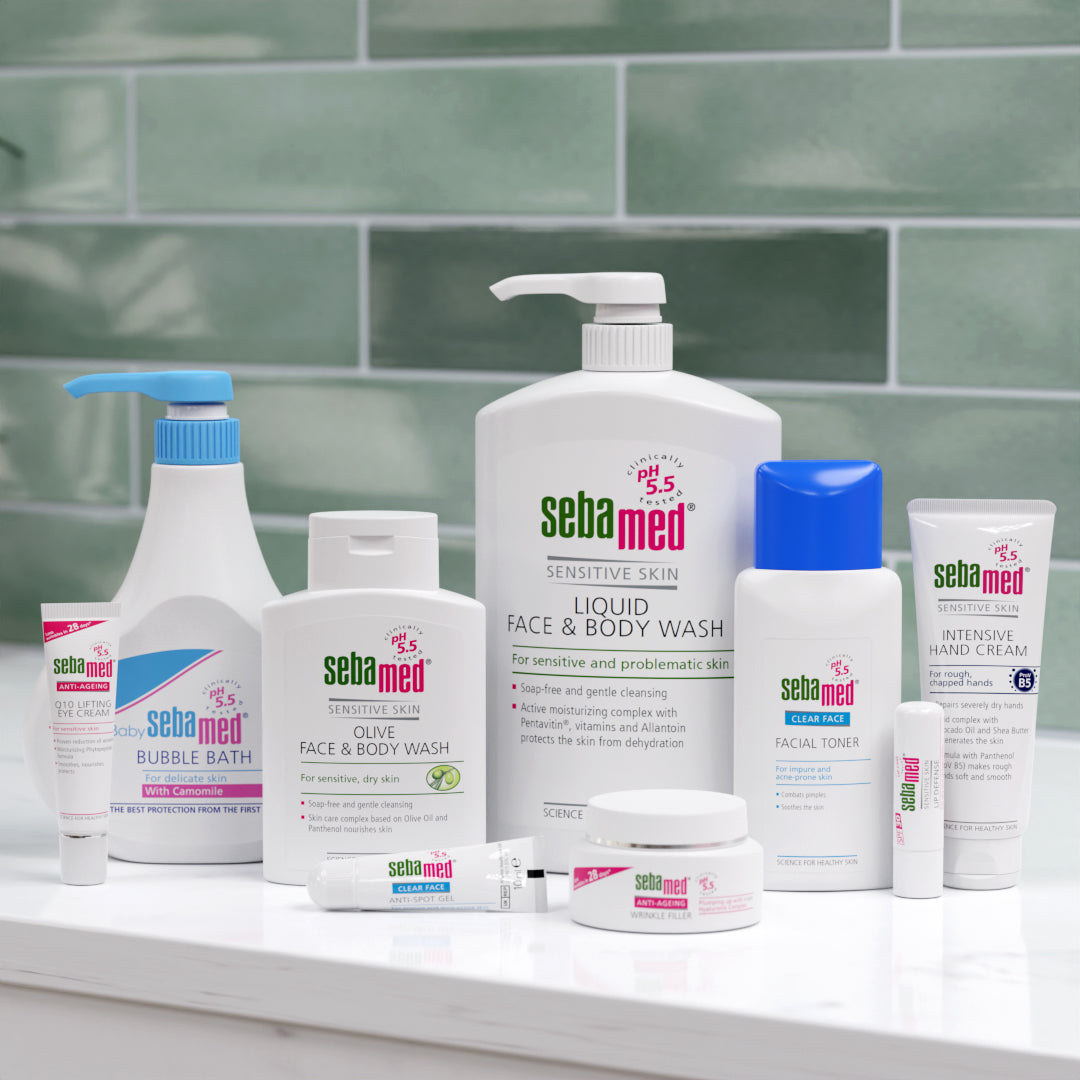When we think about haircare, we often picture the steps in our routine - washing, conditioning, styling, maybe even colouring or applying hair masks. However, enjoying healthy hair can go much deeper than we might think.
Underneath every strand of hair lies the scalp, and just like the skin on the face, it needs regular care and attention. Caring for your scalp is just as important as caring for your hair. If this part of your haircare routine is neglected, concerns with hair or scalp often start to appear. Dandruff, persistent itchiness, thinning hair or even hair loss can be signs that your scalp health isn’t getting the care it deserves.
Let’s find out all about the scalp and how to create the right environment for stronger, thicker and healthier hair.
Why your scalp matters
Just like plants need healthy soil to thrive, your hair needs a healthy scalp as its foundation. If the scalp becomes dry, irritated or out of balance, the tiny roots your hair grows from (the follicles) don’t get the nourishment they need. Over time, this can affect both hair and scalp, leaving hair weak, dull or more likely to fall out.
A big part of caring for your scalp also comes down to pH balance. The scalp naturally has a pH of 5.5, which is slightly acidic. This level protects the skin’s barrier (called the acid mantle), helping it hold in moisture while keeping out harmful bacteria and outside irritants. When this balance is disrupted by harsh products, your scalp health suffers - leading to dryness, flakiness, thinning, or even hair loss.
What affects hair and scalp health?
There are many things that can affect hair and scalp health - here are a few;
Hair Treatments
- Combing and brushing
- Rubbing with a towel
- Hot air drying
- Straightening
- Chemical treatments; bleaching, colouring.
-
Harsh shampoos and conditioners
Mental Health
- Stress
- Trauma
-
Nervous habits or tics (i.e hair pulling, scratching)
Nutrition & Diet
- Unbalanced diet
- Vitamin or mineral deficiencies
-
Food allergies or intolerances
Hormones & Health Conditions
- Age
- Hormonal changes (puberty, pregnancy, menopause)
- Skin conditions (eczema, psoriasis, atopic dermatitis)
- Other illnesses (diabetes)
- Side effects of certain medications
-
Genetic predisposition
Environmental Factors
- Dust
- Heating
- Air conditioning
- Cigarette smoke
- Dry heating air
- UV radiation
- Sea water
- Sand
Common scalp and hair problems
Many people experience scalp and hair concerns at some point in their lives. Here are some of the most common problems:
Sensitive Scalp
A sensitive scalp often feels sore or tight, may appear red or inflamed and can easily react to shampoos, styling products or even a change in the weather. This usually happens when the scalp’s natural barrier, known as the acid mantle, is weakened, making it more vulnerable to irritation. Caring for your scalp with gentle, pH-balanced products can help restore this barrier and soothe a sensitive scalp.
How to help:
sebamed Everyday Shampoo is the perfect choice for a sensitive scalp. With its pH-balanced formula, it helps maintain the scalp’s natural moisture balance while supporting the hair shaft. The result is soft, healthy-looking hair with natural volume and silky shine - without drying out the hair or scalp.
Dry Scalp and Dandruff
When the scalp doesn’t produce enough natural oils, it can quickly become dry, flaky and irritated. This dryness often leads to dandruff which shows up as visible white flakes on the scalp and hair. Dry scalp and dandruff can be triggered by many things, including moisture loss, certain health conditions or medications as well as both external and internal factors. The best way to prevent dryness and dandruff is by caring for your scalp - keeping it hydrated, conditioned and nourished.
How to help:
For dry dandruff-prone scalps, our Extreme Dry Skin Shampoo reduces and relieves itching, scaling and redness symptoms of very dry skin. Specially formulated with a natural moisturising complex to hydrate the skin and counteract dehydration.
Thinning and Hair Loss
The average person has around 100,000 hairs on their head and it’s completely normal to shed about 100 hairs a day. However, if you consistently lose more than this, or notice patchiness, thinning, or changes in your hair’s texture, it may be a sign of hair loss or thinning. There are three common hair-loss related concerns;
Diffuse Hairloss / Alopecia
This type of hair loss causes overall thinning across the entire scalp rather than in specific places. It can be triggered by several factors, including stress, poor nutrition, health or skin conditions, the menopause or medication.
Circular Hairloss / Alopecia Areata
Circular hair loss / alopecia areata appears suddenly as round or oval bald patches on the scalp. It’s not fully understood why this occurs but it’s thought to be related to an autoimmune issue where the body mistakenly attacks hair follicles.
Hereditary Hairloss / Androgenetic Alopecia
This is the most common type of hair loss, especially in men. It’s caused by a mix of genetics and hormones and tends to develop gradually. It usually follows a typical pattern, such as a receding hairline or thinning at the crown.
Does Menopause affect hair loss?
Hair loss is very common during menopause, affecting around 50% of all women. As levels of oestrogen and progesterone decrease, the natural growth cycle of the hair slows down. Strands of hair become finer, weaker, and shed more easily. At the same time, new growth takes longer to appear, meaning hair not only falls out more easily but also doesn’t grow back as quickly. This can then lead to a noticeable thinning of the hair.
How to help
Our award-winning sebamed Anti-hairloss Shampoo has been specially formulated with the NHE formula, enriched with Caffeine and Ginkgo Biloba to support natural hair growth and strengthen the hair's structure. By activating blood circulation in the scalp, it works to reduce hair loss for stronger healthier-looking hair.
Oily Scalp and Hair
Some people naturally produce more oil on their scalp than others. An oily scalp can make hair and scalp look flat, greasy, and heavy, often just a day after washing. When there’s too much sebum (the scalp’s natural oil) it can clog the hair follicles, and may lead to dandruff or even increased hair shedding. Oily dandruff can be due to hormonal changes, especially during puberty, pregnancy or menopause, stress, using the wrong products or genetics. Using the right shampoo can help balance oil levels without stripping the scalp completely.
How to help
Our sebamed Anti-dandruff Shampoo is designed for those with an oily ‘dandruff-prone’ scalp. It’s been shown to reduce itchiness and irritation of the scalp by 50% within 14 days. It’s been formulated with Piroctone Olamine, an active ingredient that targets dandruff and reduces irritation. With a scalp-friendly pH of 5.5, it also supports the scalp's natural acid mantle, helping to protect both scalp health and your hair.






